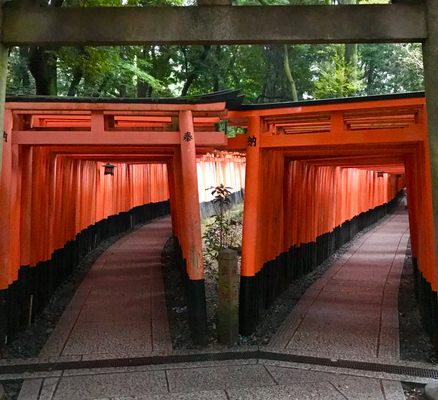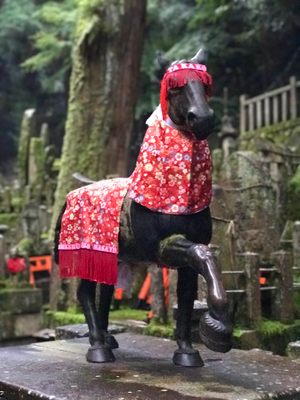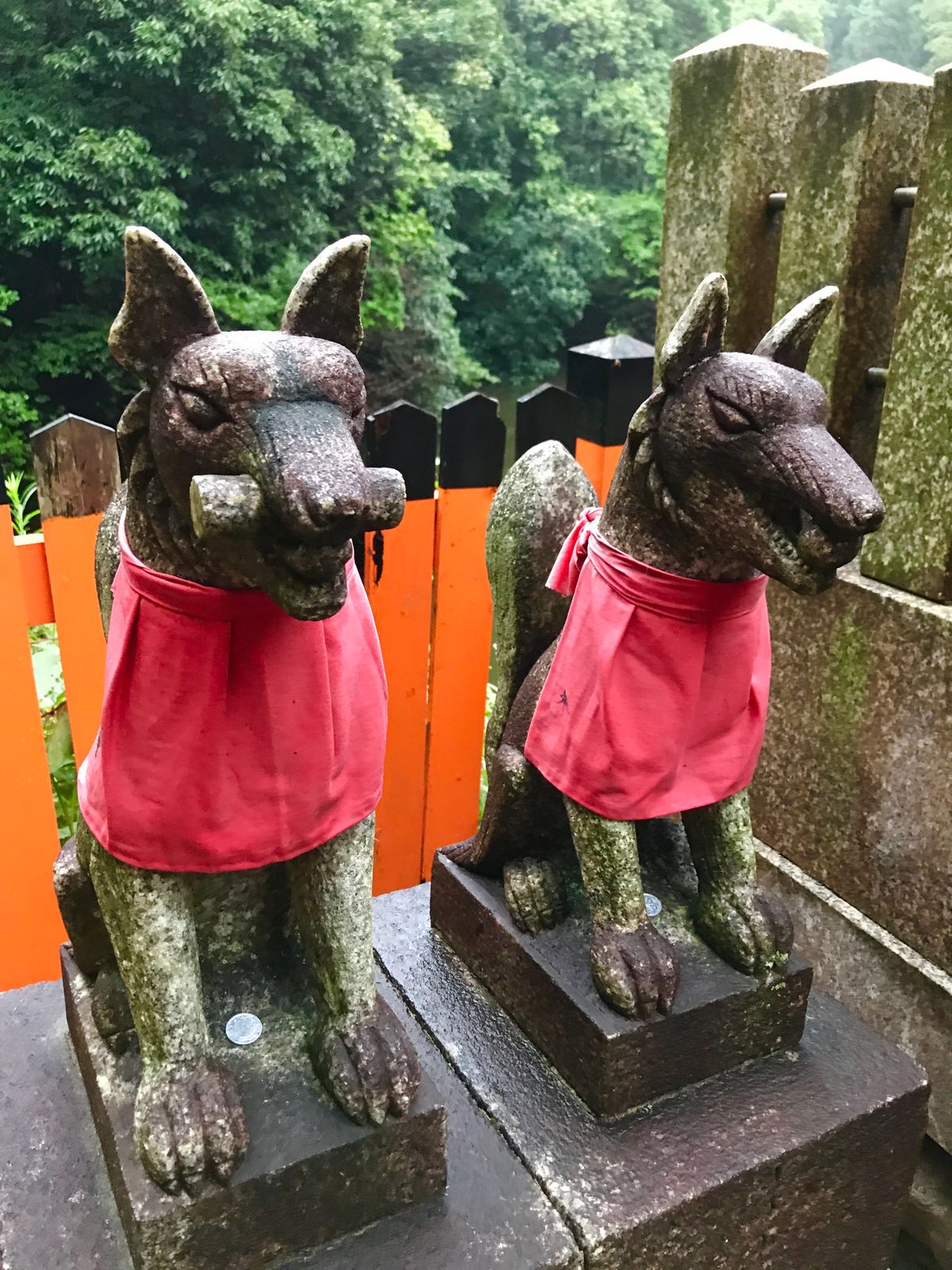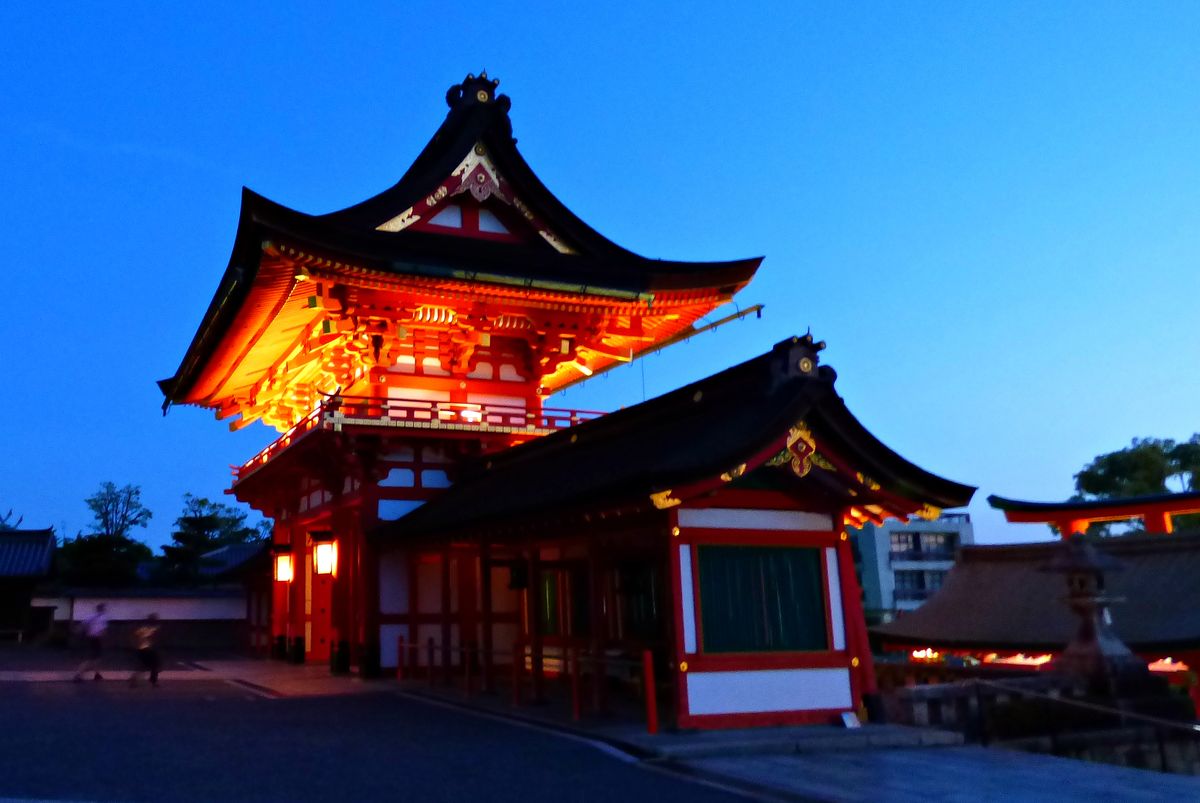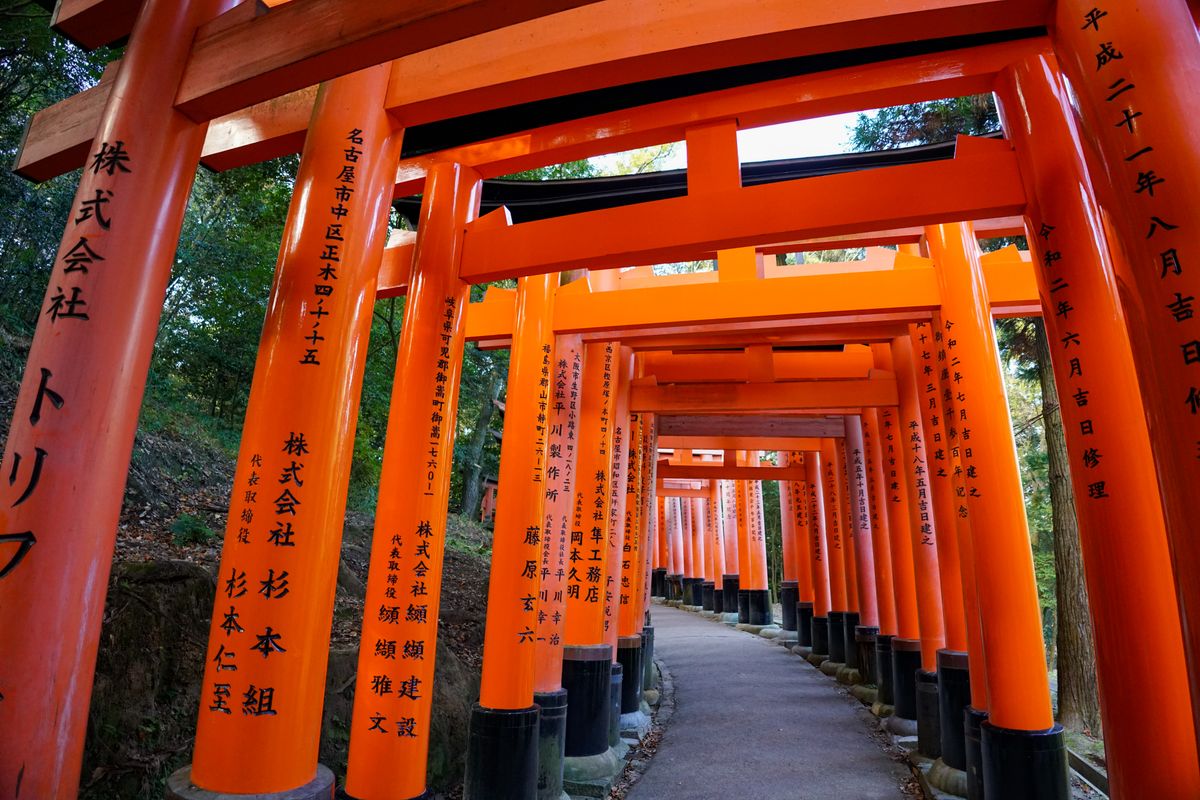About
Originally established in 711 CE by Korean lords of the area, Fushimi Inari Shrine is the most famous of several thousand shrines dedicated to Inari, the Shinto god of rice.
Foxes are thought to be the messengers of Inari and as such many fox statues can be found at Inari shrines. The foxes are sometimes seen holding keys in their mouths, the key to the rice granaries. Japanese merchants, in particular, worship Inari to bring them wealth and leave numerous offerings at the shrines, particularly fried tofu called abuurage which is believed to be Inari’s favorite food.
Fushimi Inari Shrine is also famous for its countless torii gates, offerings by worshippers, that cover the hiking trails of the wooded Mount Inari towering right behind the shrine.
These torii gates envelope a path that winds over 2.5 miles up the Inari mountain. You’ll notice that on each torii there is kanji writing. On one side of the torii gates, you’ll see the name of the person or organization that donated it as well as the date that it was donated. The oldest gates there are said to be from the 8th century and new ones are being added frequently.
It takes about two hours to walk along the whole trail. Film buffs might recognize this location because parts of the movie Memoirs of a Geisha were shot here. Along the hiking trail, there are several teahouses where you can rest like a pilgrim of bygone days. Once you’re back at the foot of Mount Inari around the entrance, you can also enjoy Kyoto-style Inari sushi—rice wrapped in aburaage—at one of the many establishments that have served food to the shrine-goers for centuries.
Related Tags
Know Before You Go
The shrine is a three-minute walk from JR Nara Line Inari Station, 10 minutes from Kyoto Station. It is a five-minute walk from Keihan Electric RailwayMain Line Fushimi-Inari station. Recommend arriving early in the morning before the crowds and, if able, taking the winding path all the way to the top of the mountain under the unending maze of torii gates to view hundreds of shrines, foxes, and folded paper cranes.
Hidden Japan: Sado Island, Nara & Kyoto
Explore a different side of Japan.
Book NowCommunity Contributors
Added By
Edited By
Published
June 30, 2010



